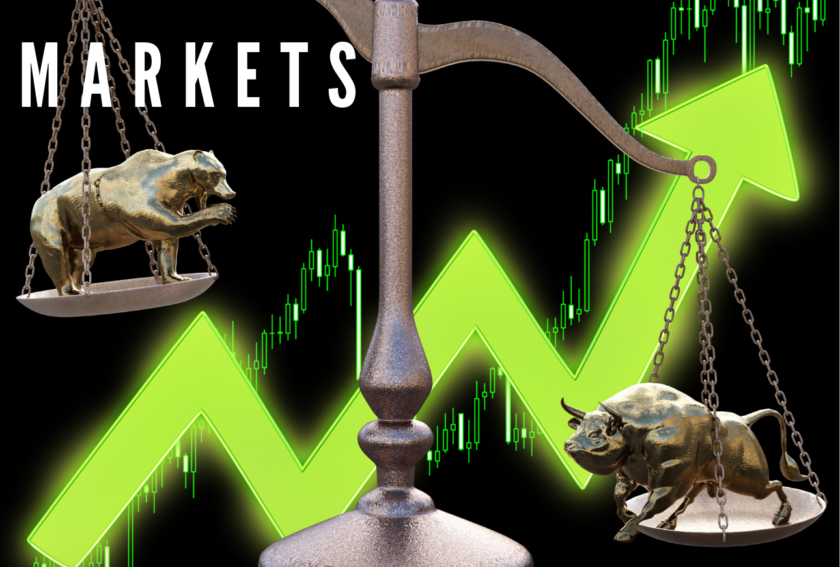Continuing their series of articles, the investment teams of Nikko Asset Management ponder how the different markets may pan out in 2021. Here, the multi-asset team looks at key themes and across the various asset classes to determine a strategy for 2021.
The year 2020 is one most would like to forget, but for markets, performance was particularly strong despite the substantial COVID-19-related economic fallout. Certainly, ample liquidity in the form of massive monetary and fiscal stimulus was a key driver of performance, but near-term optimism may also be warranted. The vaccine rollout could return demand to more normal levels in 2021 and potentially beyond, given the pent-up demand on the back of still-massive amounts of liquidity sloshing through the system.
While the overall policy response has been impressive, it is the pivot to massive fiscal stimulus that is different from anything in near-term memory. Since the Global Financial Crisis (GFC), monetary easing has been the chief stimulative agent, but fiscal stimulus was notably absent – until now. The combination of large monetary and fiscal stimulus has far more potential to generate real growth than monetary easing alone, and it is being generously applied on a global scale. With vaccines slowly releasing pent up demand in 2021, conditions are ripe for worldwide reflationary growth.
Reflation expands the opportunity set across risk assets. While we have already witnessed this in a significant rotation to COVID-19 losers, value plays such as those in Europe, Japan and emerging markets also stand to benefit from broadening global demand that is further reinforced by a weaker US dollar.
The risks that lie ahead may be in the fact that reflationary growth has become a consensus trade, showing froth in portions of the market. What could go wrong? Certainly, if the vaccines prove difficult to roll out or other problems emerge, these would prove clear setbacks to the reflationary outlook that is being so firmly priced.
A more obvious and present risk is the likely rise in long-term rates that reflationary growth typically engenders. Already rates are drifting higher, and we expect this trend to continue, particularly in US Treasuries. We are cautious on duration risk, but we are also cautious on the implications for risk assets should they rise too quickly. Growth stocks, technology in particular, are vulnerable to such moves given the high valuations that typically suffer in a rising rate environment. We still like secular growth which includes technology but prefer a bar-belled approach that includes value stocks that are less sensitive to rising rates.
Key themes for 2021
The following are some of the key themes that we are currently monitoring for 2021:
• Normalising post-COVID-19 demand: Demand may disappoint in the first quarter as lockdowns continue to roll through the US and Europe, but the vaccine rollouts should ultimately see a gravitation to more normal patterns of demand – albeit different than the pre-pandemic apportionment and including elements of economic scarring. Accommodative policy is set to continue to support such demand. China will tighten at the margin, but higher quality stimulus is transmitting to sustainable demand that is supporting exports from around the world.
• Weaker dollar: The US Federal Reserve might well have done the most in its dovish pivot back in March, and given its new policy targeting an average inflation rate, guidance suggests that policy will remain easy for at least a couple more years. Easy policy, large twin deficits and accelerating growth in the rest of the world is a favourable backdrop for dollar weakness, which is self-reinforcing as a weak US currency tends to support global demand.
• Reflation but no inflation (yet): Strong monetary and fiscal support plus improving global demand on the back of a weaker dollar supports a reflationary outlook while still-wide output gaps distance the prospects for more negative inflationary pressures. Reflation is clearly supportive of growth assets but rising long-term rates could still be a headwind to growth assets pricing at high multiples. Also, while output gaps remain supportive of few inflationary concerns, it is possible that with the significant number of bankruptcies to date, the remaining firms with fewer competitors may have pricing power of which the market is currently unaware. In addition, large quantities of liquidity do have the potential to surprise markets with pockets of demand exceeding expectations, meaning that real assets such as gold are still an important hedging asset.
• Less geopolitical surprise: After four years of enduring sudden elevations of geopolitical risk, often triggered through just one tweet, policy is likely to be more predictable – at least from the US – reducing the number of sudden “risk off” scenarios that plagued markets over the last four years. Bipartisan Washington support for continued pressure on China will remain high, but fewer surprise escalations likely mean that strained US-China relations can at least move along with fewer tail risks than experienced, say, in 2018. This bodes well not only for China assets, but also emerging markets in general that benefit from stable China demand.
• Simmering political tensions: The US is far from returning to the pre-Trump state of “business as usual” given that tensions have yet to dissipate. US president Joe Biden has promised that he will heal the country, breaking the hard division of left from right, but it is still a tall order, leaving some wondering if it is even possible. The political divide is perhaps most obvious in the US, but it is not unique – from Europe to Latin America and beyond. Biden’s win suggests a return to some sense of normalcy, but the underlying pressures of political divide remain present in varying degrees worldwide.
On balance, we remain constructive on growth among the following:
1. improving global demand on the rollout of vaccines
2. improving and sustainable China demand and
3. continued strong and coordinated stimulus.
It is late cycle, particularly for the US, but less so for the rest of the world where assets look attractive against a reflationary backdrop. Certainly, rising inflation risks that force the US Federal Reserve to turn more hawkish would be a potential catalyst for the next downturn.
Asset class outlook
Equities: The outlook for equities is positive, particularly for the proposition of normalising growth on a global scale. We still like secular growth in the US and North Asia, but we see improving demand conditions in Europe, Japan and emerging markets that show better value against broader growth. Our question in Europe is, how sustainable is the rotation? Here, we applaud the pivot from 10 years of asphyxiating austerity, but we are concerned about the banking system that remains only partially “fixed” given the still-weak state of balance sheets, high regulations and flat yield curves that make revenue growth challenging. Emerging markets could be more interesting given the adjustments to date and reforms over the last 10 years. Just rewards for years of necessary pain might be on the horizon, albeit selectively, with a focus on quality.
Sovereign Bonds: At least in the developed world, sovereigns are not well-positioned for improving growth conditions given that rates are still priced near the all-time lows set in early 2020. Asset purchases will continue, but short of yield curve control à la Japan, long-term rates should rise. In a multi-asset context, the normally “protective” asset that typically includes developed market bonds may just be the “risk” asset of 2021 where coupons clipped can easily be wiped out by duration risk with a sudden jerk to the yield curve. China bonds may just be the best alternative defensive sovereign asset. First, yields are healthy and, second, central bank policy is largely orthodox and less prone to sudden adjustments. Yields have already risen to reflect the V-shaped China recovery. Could they rise more? Yes, but the tether grows tighter given the yield advantage over the rest of the world and the higher yield is a risk-reducing offset to rate volatility.
Credit: Global credit markets are likely to outperform government bonds in a rising yield environment. Investment grade (IG) corporate spreads are likely to remain stable and compress as demand conditions improve. The yield premium and shorter average maturity of IG markets will shelter returns compared to sovereign bonds. This should also prove to be a reasonably attractive environment for global high yield markets as duration risk will have less of a negative impact.
Commodities: The outlook is positive owing to improving demand. This includes significant fiscal stimulus relative to limited supply, especially given the lack of investment over the last decade since the commodity bubble burst amid the GFC. Commodities demand had largely depended on China. But the demand envelope might be bigger this time given the commitment by developed markets to invest in their own infrastructure.
Conclusion
We are overall bullish to risk assets and negative on long-term rates, but this is just for the year ahead. We do take pause when considering the long-term sustainability of the combined largesse of central banks and fiscal policy because excesses eventually do have consequences. Nothing comes free. Deficits and debt levels are high, and central banks are currently helping to finance them, which makes sense in a state of emergency such as a war, but we are less convinced that such programmes can be unwound – as they eventually have to be – without other unintended consequences. Still, eventual limits are often anticipated well before they come to fruition, so we watch closely to follow the contours of what might follow next.
Important information: This document is prepared by Nikko Asset Management Co., Ltd. and/or its affiliates (Nikko AM) and is for distribution only under such circumstances as may be permitted by applicable laws. This document does not constitute personal investment advice or a personal recommendation and it does not consider in any way the objectives, financial situation or needs of any recipients. All recipients are recommended to consult with their independent tax, financial and legal advisers prior to any investment.
This document is for information purposes only and is not intended to be an offer, or a solicitation of an offer, to buy or sell any investments or participate in any trading strategy. Moreover, the information in this document will not affect Nikko AM’s investment strategy in any way. The information and opinions in this document have been derived from or reached from sources believed in good faith to be reliable but have not been independently verified. Nikko AM makes no guarantee, representation or warranty, express or implied, and accepts no responsibility or liability for the accuracy or completeness of this document. No reliance should be placed on any assumptions, forecasts, projections, estimates or prospects contained within this document. This document should not be regarded by recipients as a substitute for the exercise of their own judgment. Opinions stated in this document may change without notice.
In any investment, past performance is neither an indication nor guarantee of future performance and a loss of capital may occur. Estimates of future performance are based on assumptions that may not be realised. Investors should be able to withstand the loss of any principal investment. The mention of individual securities, sectors, regions or countries within this document does not imply a recommendation to buy or sell.
Nikko AM accepts no liability whatsoever for any loss or damage of any kind arising out of the use of all or any part of this document, provided that nothing herein excludes or restricts any liability of Nikko AM under applicable regulatory rules or requirements.
All information contained in this document is solely for the attention and use of the intended recipients. Any use beyond that intended by Nikko AM is strictly prohibited.




































